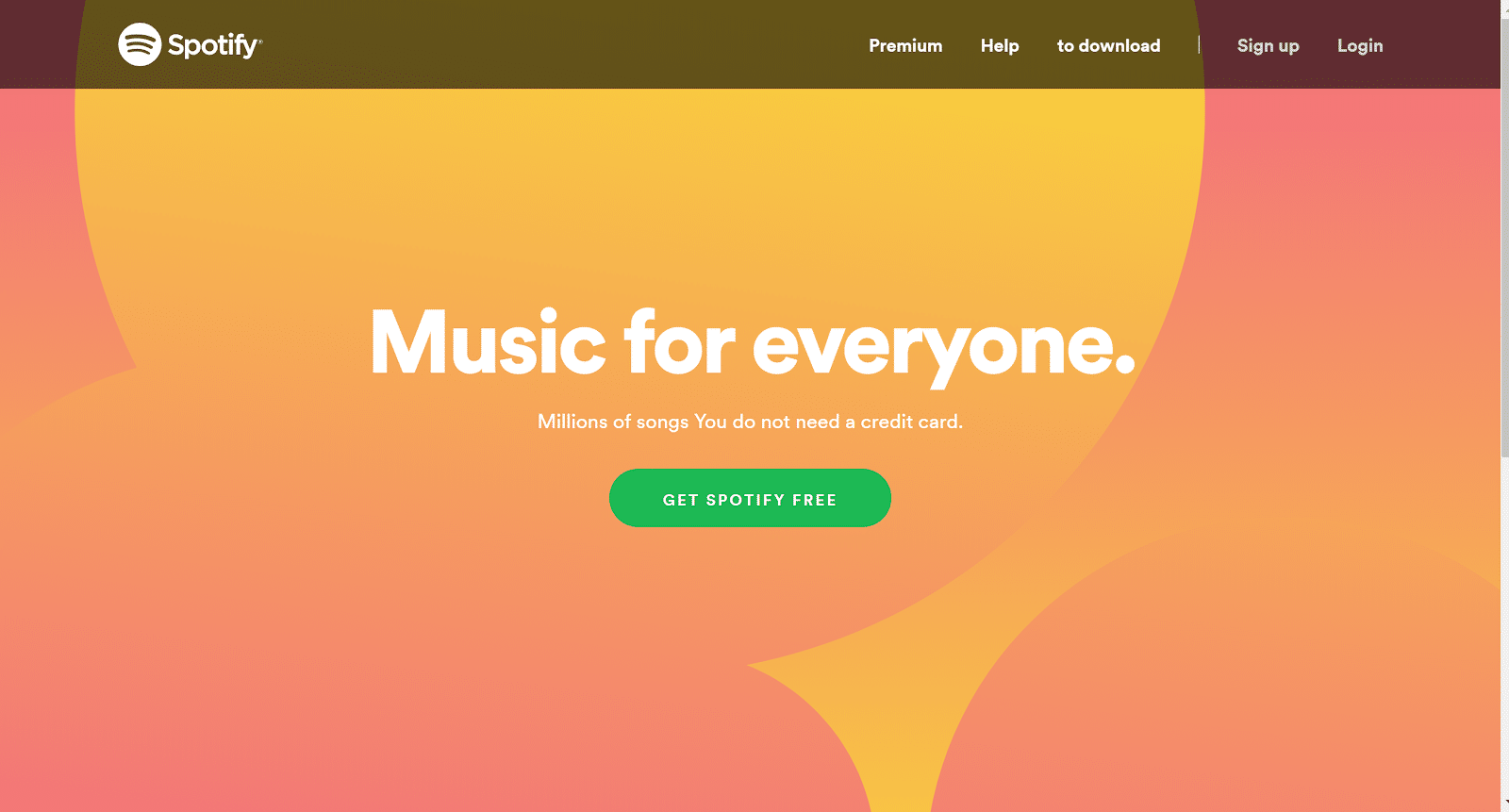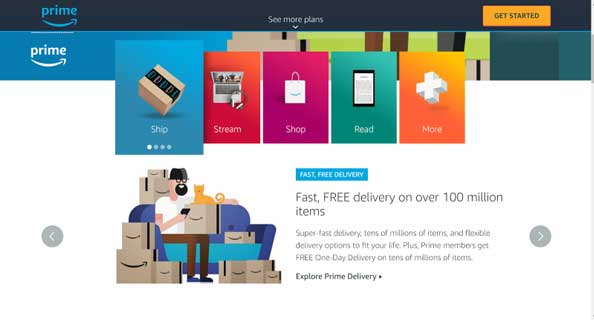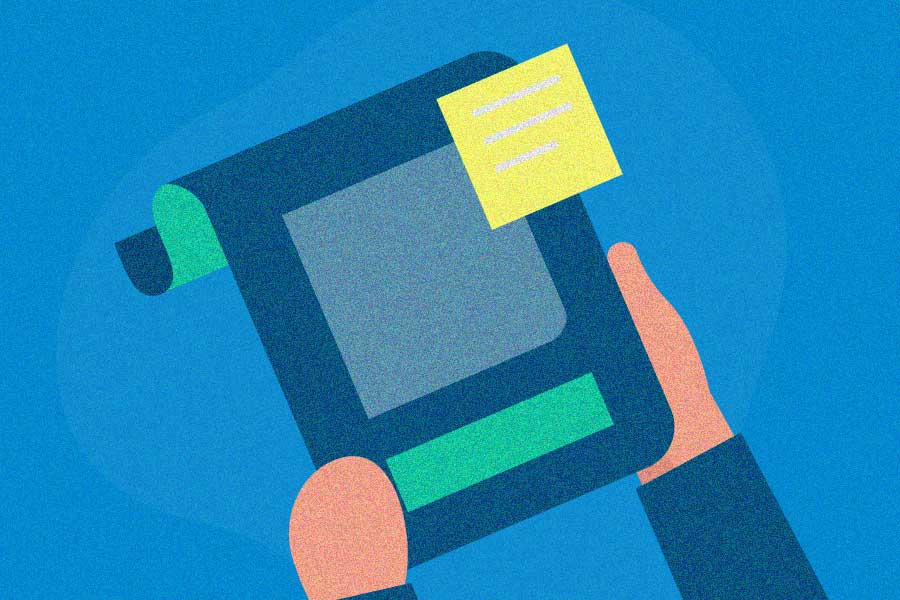“Thanks for helping me! How can I repay you?”
The principle of reciprocity describes the tendency of human nature to want to offer something when something is received. You feel obliged to do something in return because something was done for you.
For years and still today, reciprocity has continued to help human beings survive in many ways. Marketers use the principle of reciprocity to their advantage, in their marketing strategies.
What is reciprocity in marketing, how can you apply it, and what are some examples of reciprocity in marketing? We’ll cover all this and more below.
The reciprocity principle: Reciprocity at work
In 1974, sociologist Phillip Kunz conducted an experiment. He mailed out handwritten Christmas cards, along with a note and a family photo, to about 600 complete strangers selected at random. Soon enough, responses started to trickle in.
Kunz received approximately 200 replies. But why would those people reply back to someone they didn’t even know? This is reciprocity at work. Kunz’s kind gesture towards them (the holiday card) compelled those people to do something in return.
The effects of the reciprocity principle are vivid in our life every day. For example, consider a scenario where you buy a friend a birthday gift because during your birthday you received a gift from that same friend. Or planning to visit a friend because a month ago your friend visited you. It’s both natural and expected to give something back to the people who give something to you.
Define reciprocity in marketing
But what is reciprocity in marketing? How does it work in this context?
Like reciprocity in everyday life, reciprocity marketing offers something valuable to current or potential customers, in return for them performing an action that helps your business.
The stronger, deeper, and longer-lasting interpersonal relationships this principle fosters within us and the communities we live in can be extended to create longer-lasting relationships with customers too. The key is using the principle well to trigger customers to behave in the way you desire.
Using the principle of reciprocity in marketing
Whether targeting new customers or looking for ways to strengthen the bond that exists between you and existing clients, reciprocity is a perfect tool when used in the right manner.
For example, consider when marketers use freebies like coupons and special promotions to convince customers to make purchases. Or, when lead magnets like free ebooks are used to lure you to share your contact details. These are good examples that make use of the principles of human psychology in marketing.
In addition, you can use it to generate revenue without spending much on ads, by driving customer referrals through incentivizing customers to share with friends. You can also use this technique to get more leads within a short period. But remember, this norm can also backfire when executed poorly.
With that in mind, your business must use genuine approaches when trying to get a unique response from current and target customers. As much as every business is looking to make a sale, it is imperative to make sure the approach you use doesn’t seem like a blatant attempt to solicit a specific response. Make sure everything is implemented correctly from the start.
For example, consider a scenario where you are buying a laptop, and the salesperson shows you the computer and tells you the prices. But still, the salesperson offers to add a laptop bag for free. Without a doubt, you will feel obligated to make a purchase. In this case, the salesperson did not show you directly that he wants you to make a purchase, but through a freebie (laptop bag) he lured you. You’re likely to feel uncomfortable.
Don’t use this approach! Instead, try to make everything natural. If your customers think you are just after their money, and that you don’t care about giving them real value, they will not purchase.
Authenticity and reciprocity go hand in hand
The principle of authenticity and the principle of reciprocity go hand in hand in marketing, and must not be separated. If you omit one, for example, you abandon the principle of authenticity, it is highly likely your marketing approach will be viewed as a joke.
The primary idea of using reciprocity and authenticity together is to help you send a positive gesture, and establish that there is no expectation of returning a gesture.
You’ll want to make customers believe you are giving them something valuable, so that they don’t feel like they are giving you something of greater value.
Remember the example above about a salesperson selling a laptop? That is a good illustration of how not being authentic can work against you. But if your customers think what you have is more useful, chances are, you are a step away from converting them to paying customers. It’s all about favoring the customer and making them believe they’re getting the sweeter deal.
Types of reciprocity
The different types of reciprocity we have been talking about fall under two main categories: material (financial) reciprocity and emotional reciprocity.
Material or financial reciprocity
Material reciprocity tends to be physical. A good general example is when you welcome a new neighbor to the neighborhood by lending him a washing machine. Such a neighbor will feel obligated to reciprocate in some way by also doing something nice.
Some business examples include rewards in loyalty programs and referral programs, and rewards given in return for certain purchases.
Emotional reciprocity
This is when you make others feel good or appreciated by saying things like,
- Thank you for your time.
- It is my pleasure to meet you or
- It was a great time to work with you.
Whenever you say anything that causes others to feel better about themselves, they have a deep unconscious need to reciprocate in a positive or friendly way.
Gestures of assistance without a material object involved also count as emotional reciprocation.
Although your business will often use material incentives for reciprocation, never underestimate the power of emotional reciprocation when delivering a stellar customer experience. Kind words will make your customers feel valued, so they’ll be more likely to stick around. (Think about Chick-Fil-A’s commitment to gracious service and polite manners.)
Reciprocity ideas for businesses
Making sure every step you take not only influences your target customers but also allows them to reciprocate positively is a big bonus. Remember you are out to make sales. This is only possible if you win the hearts of those customers. Here are a few ideas that you may want to leverage.
- Be the first to give, without hoping to get something in return. Remember to offer something attractive. If possible, give something that is rarely given by other businesses. Often, you can give discounts, reward points, or coupons. The best approach is giving them out at the start of the sale as this will trigger a quick response.
Further, consider offering another incentive at the end. Doing this will help capitalize on the principle of reciprocity. For example, you can promise a price cut for referrals at the end of the sale.
- Make your customers feel valued. Don’t you feel loved when treated uniquely? Now, imagine your customers having the same feeling. The best thing is that this is doable.
- For example, instead of picking rewards you think are suitable for your customers, allow them to make the selection. Don’t limit them to what you think is good for them. Give them freedom (such as through a points system or reward menu). Doing so is a positive gesture that shows you truly value them.
- A shopping voucher (store credit) is another item you can use to make your customers feel special. The fact is, they will get things from your store using the voucher. But in the process, they are also likely to feel obligated to make more purchases from personal cash once the voucher is exhausted. Besides, this may trigger them to return the favor by visiting your store often.
- Also, consider surprising customers with free gifts, thank-you notes, in-store refreshments, or other special customer service gestures, just because. (Check out our list of customer service tips for ideas.)
- Help the customer outside of your store. It is an excellent gesture to engage your customers, even outside your store. Doing this helps keep your brand memorable, and you may be surprised to see how past customers keep coming back. For example, you can engage your customers through informative content. Let’s say, ‘How to…’ articles. Your efforts may not pay off immediately, but sooner or later, you will start to see real results. That simple act of helping your customers outside your shop is likely to favor your business when they finally decide to make a purchase.
- Make it memorable. There are many rewards associated with making a brand memorable. One of the obvious benefits is that of increased sales. Of course, there are other benefits. So, how do you make your business unforgettable? It is simple; you just have to give that which will not fade in the minds of your customers. In other words, give something valuable and if possible, avoid cheap and flimsy gifts. A durable reward is a good option. For example, you can be offering coupons over the holidays. Most people want to have fun over the holidays while spending less. If you develop such a culture, it is highly likely your shop will be the only option during holidays even when you have no freebies. Why? Because you offered something of worth at the right time.
- Keep the relationship going. Don’t be that business owner or marketer who ends relationships at the end of a sale. Remember you need that customer in the future. So, nurturing that relationship is very crucial.
- One way to keep the relationship going is rewarding referrals: guaranteeing a discount, credit, or another reward for every new person an existing customer sends your way.
- You can also start a loyalty program, where you reward existing customers for purchases and other brand-building actions,
- Or, you can alert your current customers about upcoming offers and events, through newsletters, email blasts, or text alerts.
- Doing any of these actions will make sure you are in a position to generate more and more revenue.
- Offer customers ways to show their support. Not all the time you expect your customers to make a purchase. Sometimes allowing them to thank you in other ways is equally significant. For example, tell them to like your social media pages, to write reviews, to refer new customers to you, and rate your brand. Simply, have an open mind on how your customers can support your business. Always remember the sky’s the limit. So be creative enough.
Reciprocity examples in marketing
Let’s review how businesses today use reciprocity to engage and maintain relationships with their customers.
Spotify Premium free trial
The Spotify Premium option offers Ad-free music streaming with offline mobile access. Now Plus a 30-day free trial for their Premium membership, which can be canceled at any time at no cost.
People love listening to the music without getting interrupted by ads, and love being able to access their music anywhere once they’ve started. This “hook” makes it hard for people to stop the payment when the free trial ends, especially when it only costs $8/month.
YouTube
YouTube is a perfect example of a platform offering free content in exchange for ads. However, YouTube content creators can use the platform to share their expertise in exchange for subscribers, ad revenue, etc. When they started to produce premium paid content, they launched a “free first episode” promotion to lure people in to continue to watch the rest of the season by subscribing to their premium subscription.
Amazon Prime: Free trial
Amazon Prime free trial offers free one-day delivery and exclusive savings on certain products, plus exclusive music, videos, and other media. The company attracts new customers by offering a free trial with no commitment required, and if you are already using Amazon, you can definitely see the savings from the delivery costs if you purchase more than two to three items per year.
Referral Rock: Free resources
Free guides on referral programs, brand ambassadors, and more can be found on our Referral Rock marketing guides. We take the game a little further by giving you access without even asking for your email address!
Crazy Coffee Crave: Free coffee education
CrazyCoffeeCrave provides free education and guides on how to brew your own coffee. Their main focus is to provide high-quality content in exchange for product recommendations and Amazon affiliates. No bells or secret agenda, just gambling purely on their readers to make a purchase using their links when they do want to purchase anything coffee related.
Backlinko
Brian Dean is pretty popular when it comes to SEO information. But if he’s giving out free information how is he making a living? Well, the primary way he’s making money is by selling SEO courses. However, he doesn’t have it showing on his website – it’s only for those who subscribe to his email. And when he’s ready to launch a course, he lets his subscribers know.
As you can see, one of the best reciprocity strategies is content marketing. Blogging provides a great way to utilize the norm of reciprocity, by allowing you to share value for free in the form of blog posts. But here’s the catch, you need to focus on being genuinely useful to your audience to win their hearts.
Wrapping things up
Lasting business relationships don’t develop without dedicated and consistent work. It takes a significant amount of time and energy to build robust and lasting business relationships.
Building a strong relationship with your customers can set you up for repeat business. But as you look forward to this and by offering incentives, it is also essential to keep in mind how best to provide customer service and support policies that inspire trust.
Trust is everything. If you inspire trust with your customers, you can be sure to build a longer-lasting relationship. And yes, it is simple to build that trust by maintaining authenticity, developing mutual respect, and having a reliable complaint resolution mechanism.






